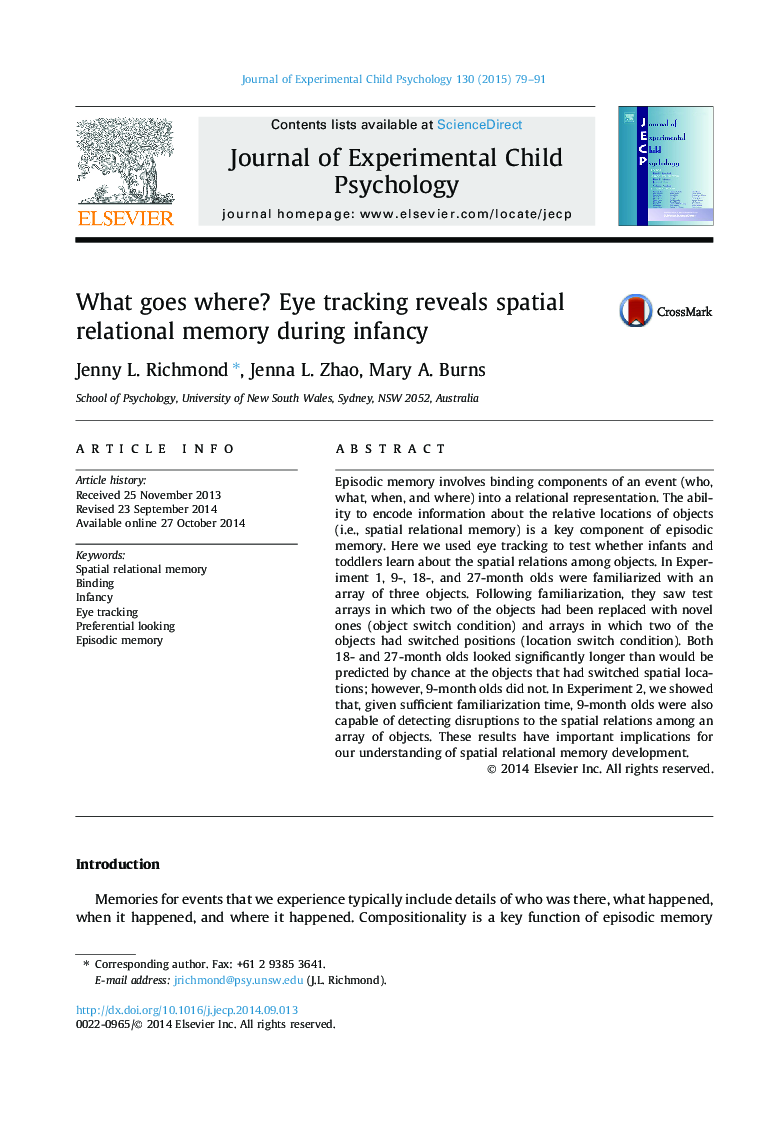| کد مقاله | کد نشریه | سال انتشار | مقاله انگلیسی | نسخه تمام متن |
|---|---|---|---|---|
| 918003 | 1473482 | 2015 | 13 صفحه PDF | دانلود رایگان |
• Here we use eye tracking to test whether infants learn about spatial relations.
• Infants looked longer at objects that had switched locations.
• Preferential looking was dependent on familiarization time in young infants.
• Infants learn about spatial relations before they are able to use them to search.
Episodic memory involves binding components of an event (who, what, when, and where) into a relational representation. The ability to encode information about the relative locations of objects (i.e., spatial relational memory) is a key component of episodic memory. Here we used eye tracking to test whether infants and toddlers learn about the spatial relations among objects. In Experiment 1, 9-, 18-, and 27-month olds were familiarized with an array of three objects. Following familiarization, they saw test arrays in which two of the objects had been replaced with novel ones (object switch condition) and arrays in which two of the objects had switched positions (location switch condition). Both 18- and 27-month olds looked significantly longer than would be predicted by chance at the objects that had switched spatial locations; however, 9-month olds did not. In Experiment 2, we showed that, given sufficient familiarization time, 9-month olds were also capable of detecting disruptions to the spatial relations among an array of objects. These results have important implications for our understanding of spatial relational memory development.
Journal: Journal of Experimental Child Psychology - Volume 130, February 2015, Pages 79–91
